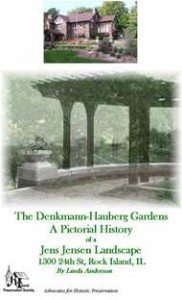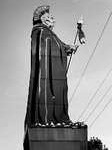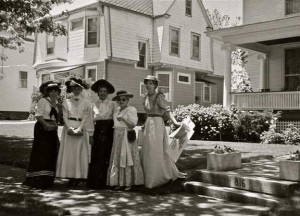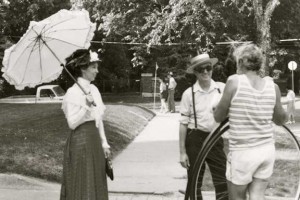August 2013
UPCOMING MEETINGS:
August 2013 We are taking a “vacation” this month so there is not a meeting
Tuesday,September 17, 2013, 7:00 PM, Home of Linda Anderson 1718 21st Street
Regular business meeting. Focus will be on preparing for the October “Every Building Tells a Story” program at RICHS.
Tuesday, October 15, 2013, 6:30 PM Members; 7:00 PM Public, Rock Island County Historical Society, 822 11th Street, Moline
“Every Building Tells a Story!” program. RIPS members are needed to set up and assist at this public program. Set up begins at 6:30 with public invited at 7:00 to 8:45 PM See article below
———————–
OCTOBER PROGRAM
Every Building Tells A Story!
Join us for a workshop with research veterans who will share their strategies, favorite sources, and helpful tips. We will discover the wide variety of materials available at the
Rock Island County Historical Society Library, learn what is new in on-line resources, and have time for hands-on instruction on some of the library’s most used resources.
The public is invited to attend free of charge. Tuesday, October 15, 7:00 to 9:00 PM
Rock Island County Historical Society, 822 11th Street Moline, IL
——————————
NEW LOOK FOR RIPS WEBSITE
The Rock Island Preservation Society’s newly revised website is up and running.
www.rockislandpreservation.org There are nearly 200 articles about history as depicted in early postcards, as well as several walking tour booklets as pdf files.
Check out the previously unpublished story about the interior of the former Modern Woodmen of America building at 1504 Third Avenue, written by RIPS member Walter Lilius. The article and photos will give you a greater appreciation of the building now known as the Rock Island County Office Building.
————————————
ILLINOIS STATE PRESERVATION
Mike Jackson, who has been the assistant State Historic Preservation Agency Offcer, is retiring in December 2013. His position will be filled by Rachel Liebowitz. She has taught and worked in Texas, Kansas and Illinois, and received her Masters in Architecture and PhD in Landsacape Architecture at the Uiversity of Illinois. She will work with Mike for several months before he departs.
——————————
2013 ILLINOIS STATEWIDE PRESERVATION CONFERENCE
Making Preservation Relevant by Linda Anderson, President
The 2013 Statewide Preservation Conference held June on June 27 – 29th in Evanston, Illinois. RIPS members Linda Anderson and Diane Oestreich attended the conference that was sponsored by Illinois Historic Preservation Agency, Landmarks Illinois and
the Illinois Association of Preservation Commissioners.
‘Making Preservation Relevant” was the perfect topic for this year’s preservation conference bringing together preservationists from across the state for workshops, keynotes, receptions, walking tours all while sharing stories of preservation successes, challenges and innovative solutions.
The conference opened with an evening reception at beautifully restored Nichols Concert Hall, originally a First Church of Christ Scientist, and very similar to the one here in Rock Island. Conference sessions were held at Hilton Orrington, a restored historic hotel in downtown Evanston. After the opening session, (see Preservation Matters to Real People) participants spent the next one and one half days attending workshops chosen from a variety of options on topics ranging from tax policy to repairing historic windows. Following are some highlights from the workshops Diane and I attended….
Preservation Matters to Real People
The Keynote Address, given by Kevin Kirkpatrick of the Metropolitan Group of Chicago, was an eye opener for many of us. The Metropolitan Group is a company that, in their own words, “Crafts strategic and creative services that empower social purpose organizations.” These organizations include everything from children and families to economic development to heritage, arts and culture. And that’s where historic preservation fits in.
A major point he made is that MOST decisions are made based on feelings or emotions, not facts. We insert our own feelings, usually without realizing it, into any issue. This means that, no matter how logically, rationally – yes, accurately – a point is made, the innate feelings of a person tempers their PERCEPTION. That means that RIPS, to promote our cause, must connect with those feelings already in place.
He also suggested that, in trying to achieve goals, we don’t waste a lot of time on those whose minds are totally closed – it won’t change them. As for those who are already committed, we just need to make sure they’re informed. But that vast middle population who do care or can be made to care, but who aren’t committed, need our full attention.
To help understand how we can address issues more convincingly, he quoted Robert Reisch, who wrote that we need to “reframe” issues. Reframing means more than just conveying strings of facts–it means bundling them into a big picture that people can connect to the deeply held values that they already hold.
The Metropolitan Group developed a new “frame” for the National Trust: Preservation Matters to Real People. Those words emphasize that preservation has an impact on everyone’s life, not just a few ‘preservationists.’ A key to engaging younger people is to realize that they don’t necessarily want to support a specific organization, but they do want to be part of a wider movement, to belong to a group.
One of the first suggestions he made is that the term “historic preservation” just doesn’t ring bells for too many people. But folks do have feelings, generally positive, about heritage – and isn’t that what we care about too? Maybe we should become the Rock Island Heritage Group. (By Diane Oestreich)
Beyond Buildings: Documenting Significant Cultural Landscapes
Parks, streetscapes and gardens make significant contributions to a city. Thinking of them as cultural resources relates to making preservation relevant to a broader group of people and identifying the elements that make Rock Island distinctive.
Julia Bachrach, who works with the Chicago Park District, talked about her efforts preserving and restoring the Jens Jensen designed landscapes in Chicago parks. She also shared ideas that can be used to highlight historic landscapes, from docents to brochures to downloadable audio tours.
We have used Julia and her research as inspiration and as a resource as we learned about the landscape architects who worked in Rock Island at the turn of the century. We were pleased to share with her a copy of our booklet, The Denkmann – Hauburg Garden: A Jens Jensen Landscape. (Linda Anderson).
—————————–
Are we missing opportunities to expand our preservation audience? Maybe adding to our message would help. For many people, it may not be about architecture, but more about what buildings were and what they can be today and tomorrow.
Does a neighborhood have a compelling story to tell? Take for example the Lawndale Neighborhood in Chicago where the inability of black families to obtain mortgages led to the formation of contract buyers leagues. Uncovering these stories can broaden support for preserving buildings and neighborhoods. How did our city grow and what important ethnic and immigrant stories are waiting to be told?
Go Urban? Just as we have done with loft style living in downtown Rock Island, do we have housing areas near downtown that could become the place for “neat young people, who want to do neat things, create a cool space and be part of the urban environment”? Elements of this idea are included in the Arsenal Gateway planning document that is expected to be presented to City Council in the next few weeks. Not familiar with the Arsenal Gateway plan? A copy is available on the city’s website www.rigov.org/documentcenter/view/5611
Could we be more creative in how we treat buildings that are waiting for a new use? “Dead” looking buildings give the impression of a dying neighborhood. Instead of boarding up a house with plain boards, how about involving the arts community and using boards painted by young artists to look like windows complete with curtains and maybe a cat sitting on the sill, or a doorway painted with an image of a screen door? This was done successfully in RI some years ago while the Murphy Lofts Project was waiting for development.
Is a downtown building waiting for a new use? As a unique idea for involving the community, add chalk board paint under a header I Wish This Was… and watch for suggestions. Yes, first thing I thought of was who replaces the chalk, but maybe in addition to the chalkboard, post a picture of the building on Facebook with the same caption and see what happens.
The goal of all these ideas is to promote preservation by encouraging people to recognize that buildings and their stories are important. They are viable structures that need to be put to good use once again. (L.A.)
————————————–
Surveying in the Digital Age and Show me the Money:Tax Credits for Historic Buildings
These sessions may sound less inspiring, but they were no less useful. Surveying is the ongoing assessment of our historic resources. Using current technology like geographic information systems (GIS), state of the art computer programs, smart phones and tablets in the survey process, panel members offered their tips on gathering and sharing information and storing it a format that can be continually updated and accessed by a wide variety of users.
Preservation tax credits are powerful tools that can make restoration projects viable. They have been used successfully in many of our downtown rehabilitation projects. But tax credits in bordering states are more favorable than here in Illinois. Efforts to adopt a statewide historic tax credit program in Illinois failed to pass this year, but the effort is not dead. Landmarks Illinois is a great resource for keeping abreast of legislative activities on both the state and national level. RIPS is a Landmarks Illinois member and we will continue to share their legislative updates and calls for action on our Facebook page. (L.A.)
Valuing Historic Properties: Location, Location, Location
In 2008 the Preservation Commission of Rockford, Illinois undertook a study of property values within designated historic districts, comparing them to values in adjoining neighborhoods. The study, conducted in a city similar in size and location to Rock Island, used assessed property values and was able to demonstrate that in fact historic district designation protects property values. Now our challenge is find ways to communicate this message locally, letting property owners know that historic district designation is a benefit rather than an obstacle and then building support for the designation of additional Historic Districts in Rock Island.
Realtor and former Oak Park Historic Preservation Commission member Karen Doty talked about the workshop she held for realtors last April in Oak Park. Her first step was sending a survey to realtors to gather their opinions on selling historic properties and to find out what they hear from prospective buyers. A copy of the survey and results was presented as a handout. Karen then provided tips on how she organized the workshop that included the discussion topics: marketing historic properties, landmark designation, National Register designation and tax credits. Her ideas and tip sheets provide a great starting point for working with preservation groups across the Quad Cities on a realtor’s workshop of our own.
“Preserving our distinction preserves property values”, states the Director of Community Development, Lake Forest, Illinois. Lake Forest and Rock Island are very different communities, but the message works for both. If we continue to promote Rock Island’s distinction as a city of interesting and livable neighborhoods with a vibrant downtown arts district, we will attract residents who choose to live in and contribute to great neighborhoods. Property values cannot help but benefit from this commitment to community. (L.A.)
———————-
…. So wow, what an information-filled conference! And when I chose which workshops to attend, I left many interesting topics for another time: How to Resolve Preservation Threats in Your Community, The Preservation Green Lab, What Commission Members Need to Know About Historic Resource Protection, and more. But I did return with renewed inspiration, innovative ideas and useful tools I hope we can put to use in the months and years ahead as we continue to advocate for the preservation of our built heritage here in Rock Island. `~Linda Anderson
————————————
BROADWAY’S 25TH ANNIVERSARY CELEBRATION
 The Broadway Historic District will mark the 25th anniversary of when the neighborhood association was formed with a free, public celebration on Saturday, Sept. 28, 2013, from noon to 5 p.m. on 22nd Street in Rock Island between 7th and 9th Avenues.
The Broadway Historic District will mark the 25th anniversary of when the neighborhood association was formed with a free, public celebration on Saturday, Sept. 28, 2013, from noon to 5 p.m. on 22nd Street in Rock Island between 7th and 9th Avenues.
“It’s a chance to celebrate the great success the neighborhood has achieved,” said Barb Braun, Broadway Historic District president and planning committee chair. Braun has lived in the Broadway neighborhood for 18 years.
“This event will appeal to all ages. We’ll have a variety of activities, plus food and drink and entertainment. History buffs will enjoy the guided walking tour of 22nd Street and the antique cars on display,” Braun said.
Kids’ activities will include face painting, boomerang demonstrations, rocket launching, and kaleidoscopes van, the opportunity to meet a Rock Island police officer, and getting to see adoptable pets from QCPaws.
Four musical groups will entertain attendees (Rose N’ Thornes from noon to 1 p.m., Lynne Hart Jazz Quartet from 1 to 2 p.m. and 3 to 4 p.m., Pam and Will Trotter Folk Duo from 2 to 3 p.m., and The Treble with Men Barbershop Quartet from 4 to 5 p.m. Twenty local artists and artisans will display and sell their works at the event. A variety of vendors will have food and drinks for purchase, including beer, pizza, wine, pop, and ice cream.
A short presentation will happen at 12:50 p.m. on the steps of the Karpeles Manuscript Museum, 700 22nd St. A partial Great Unveiling will be demonstrated throughout the afternoon at 735 22nd St. Great Unveilings are a signature event for the historic district where siding is removed from a home to reveal the original clapboard.
Both long-time and new residents will have a chance to record their memories of their time here as residents Steve Trainor will record their memories. The footage he gathers will be edited into a short DVD that will celebrate the neighborhood so many have called home from the 1800s to today.
This event is open to everyone. Parking will be available at Karpeles and on neighborhood streets. For more information, contact Braun at (309) 912-2657 or [email protected], or visit the Broadway Historic District’s website at www.broadwaydistrict.org.
The seed for Broadway was planted on a Sunday afternoon June 1981, when the newly formed Rock Island Preservation Society sponsored “Tour Yesterday” on 20th Street. The street was closed to vehicular traffic from 7th to 17th Avenues for this free event, and a placard was placed before each building. The placard included the history of the building, listing many previous owners, as well as old pictures if they were available, and also pointed out the special architectural features of each home. Simple refreshments were sold and members of the society were costumed in flamboyant Victorian outfits to add historic ambience to the event. Live music emanated from Jean and Don Jackson’s porch, as their family and friends contributed to the day. An antique fire engine was a special attraction for the children. Hundreds of people strolled the street (and even took a horse drawn carriage ride) while they absorbed the history of our area.
Residents took new pride in their homes, and outsiders began to appreciate this marvelous street. Little did we realize how much impact this event would have in the future.
In ensuing years, the Preservation Society’s “Tour Yesterday” featured 19th, 22nd, and 23rd Streets, as well as some other areas of Rock Island. Some of these later tours incorporated interior building tours as well. The information posted on the placards later was incorporated into booklet form, which were published by the Rock Island Preservation Commission. These tour books are still available at several locations, including City Hall and the library.
Despite the success of these tours and the increasing interest in historic Rock Island, especially the central area, the Preservation Society believed that its mission was to the city as a whole. It was decided to create an identity to brand and define this unique neighborhood. After brainstorming for a few months, the name “Broadway” was decided upon. Twenty-third Street was formerly named Broadway Street and the Broadway Presbyterian Church, named for its location, is still located at the corner of 23rd St and 7th Ave. The Society would use “Broadway” when it made reference to this area. Shortly after the name was decided upon in 1988, the time was appropriate for another organization to be formed, which would concentrate exclusively on the Broadway area. That was the beginning of the Broadway Historic Area Association, and not-for-profit incorporation papers were filed. The purpose of the organization was education about and identification of the unique aspects of this historically significant part of town. Although some of the members of the original board were also members of the Preservation Society, an effort was made to involve residents who had not previously been active in the preservation movement.









